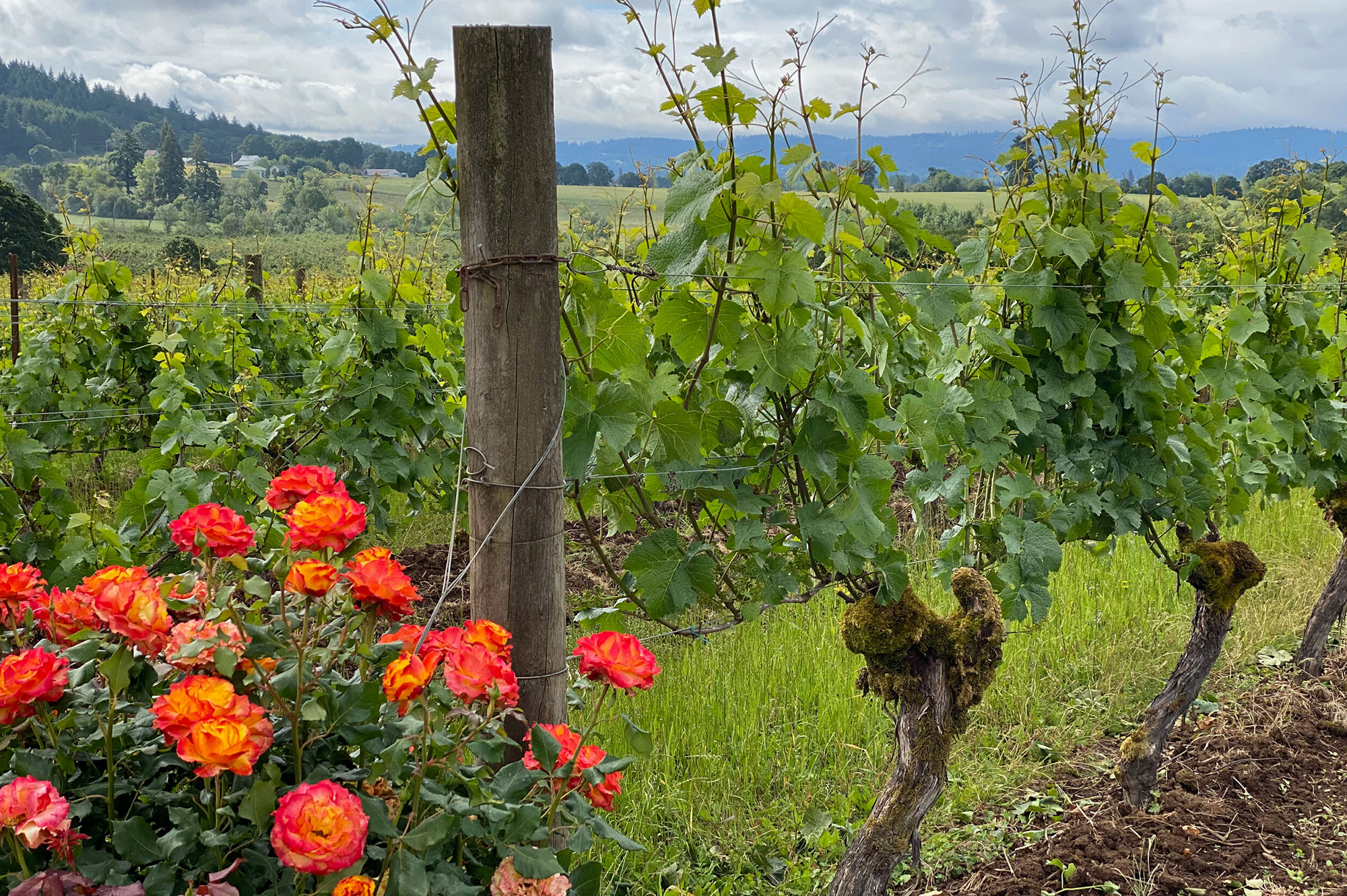
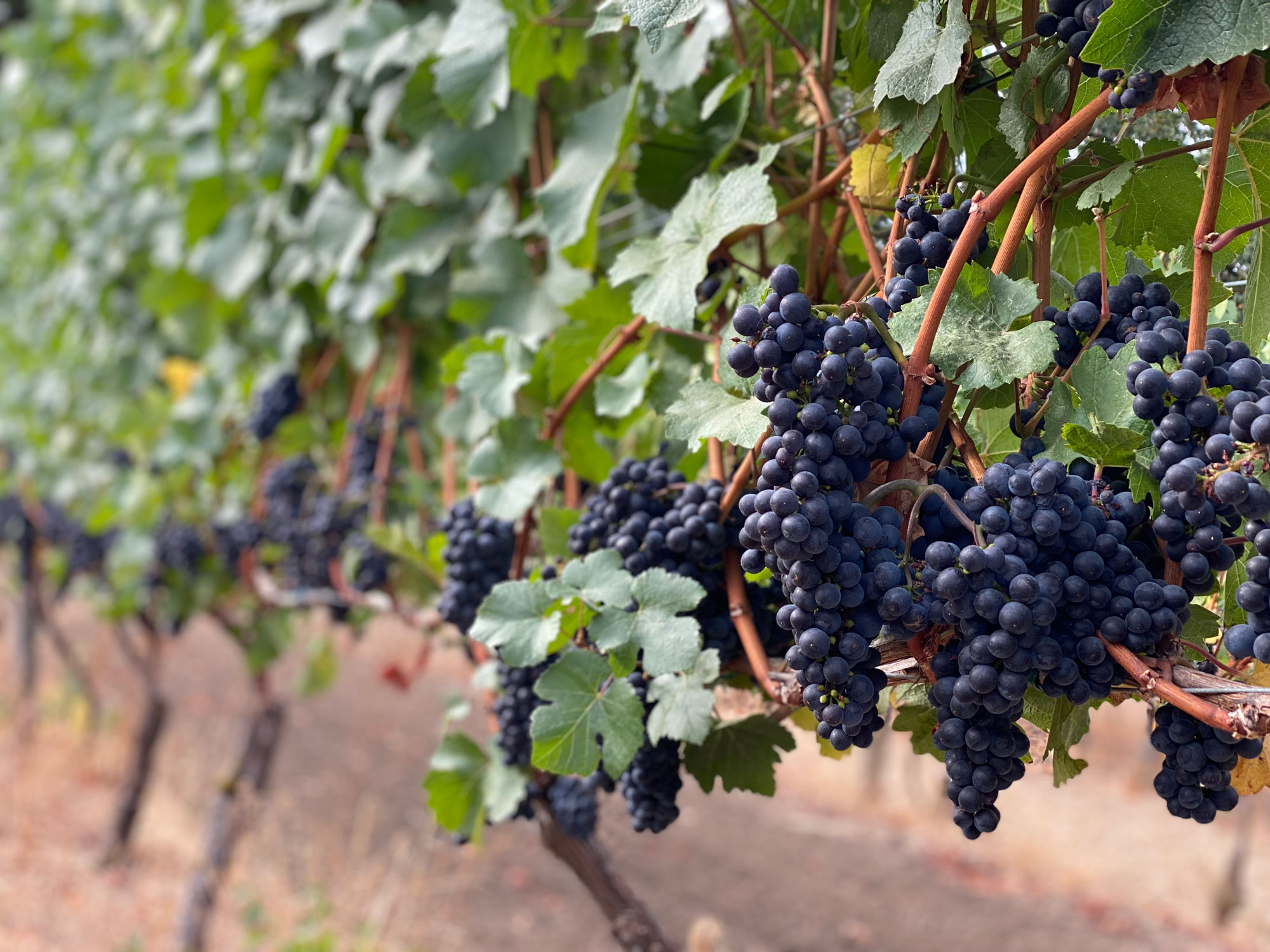
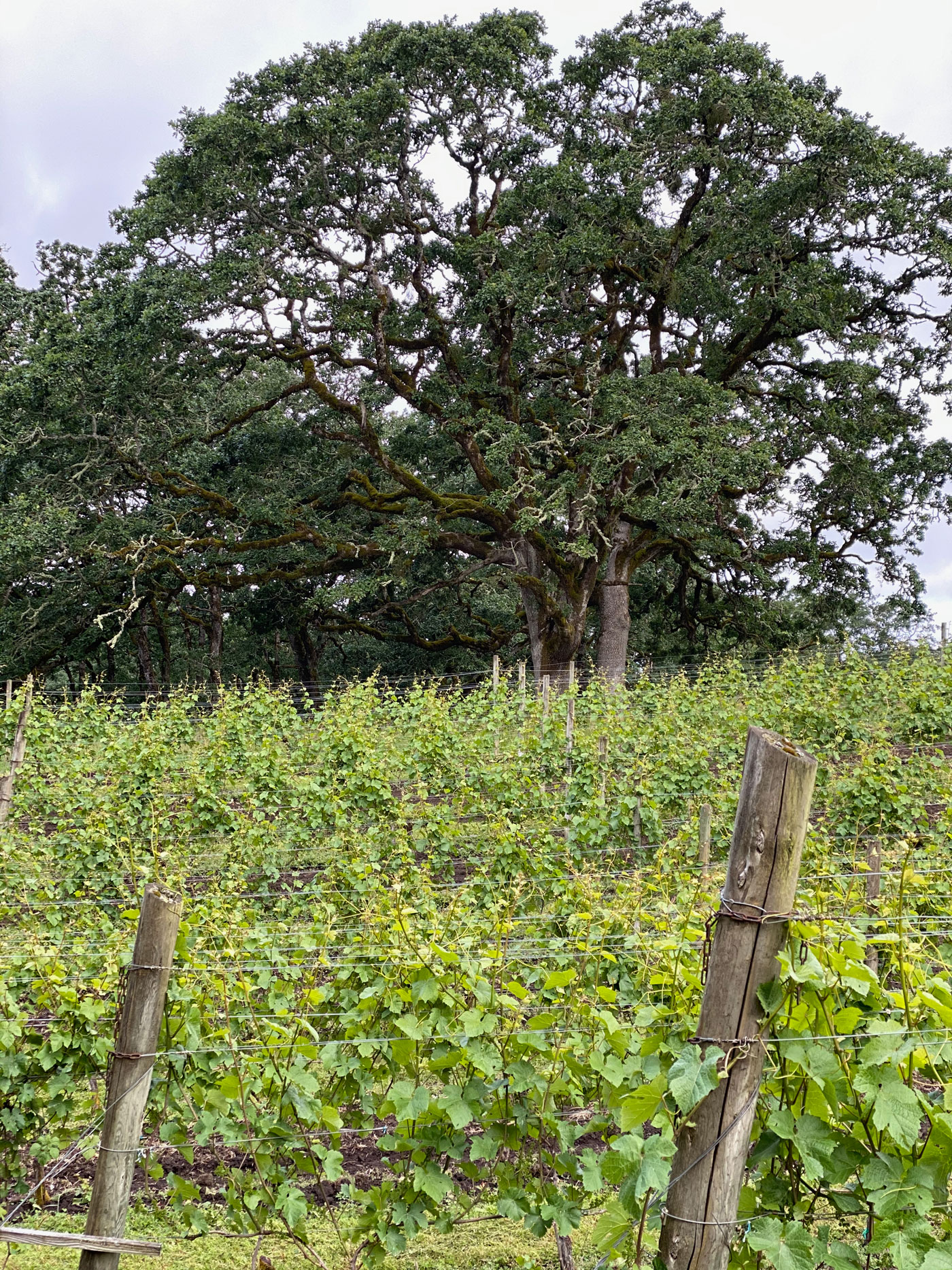
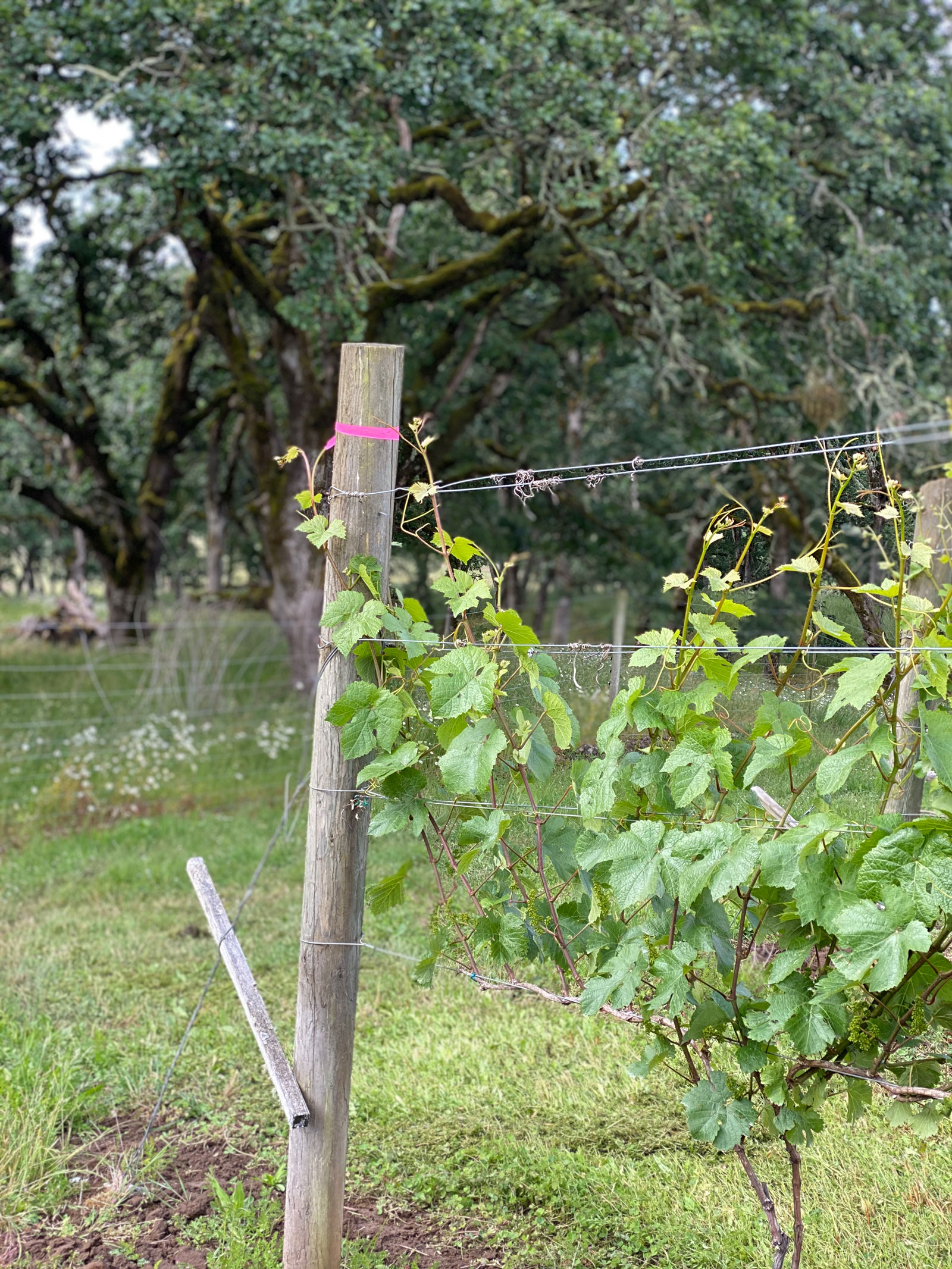
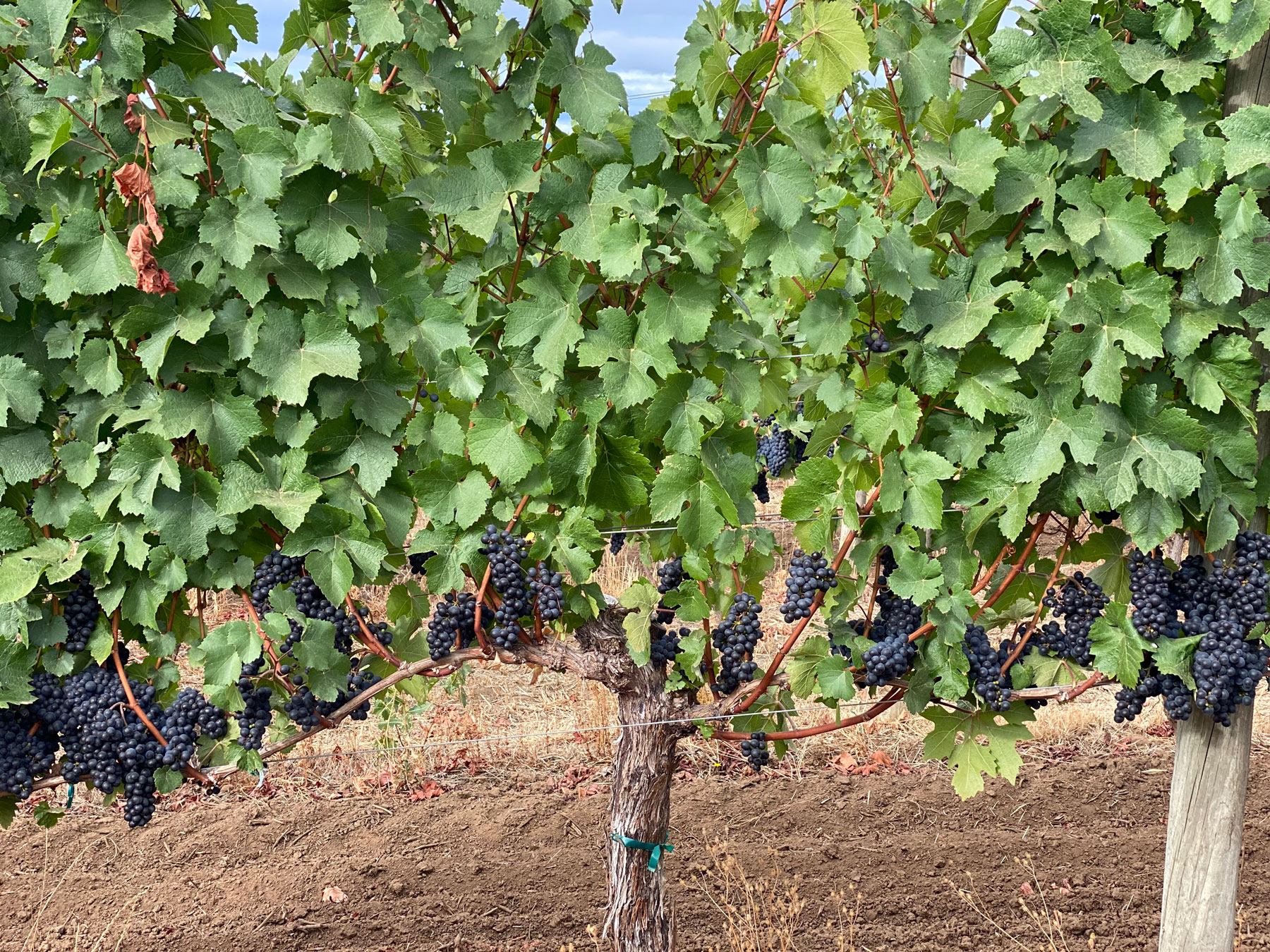

CANARY HILL VINEYARD
Eola-Amity Hills AVA, first planted 1983
This prized vineyard is owned by Ken and Karen Wright of Ken Wright Cellars and lovingly farmed by Seth Miller. Canary Hill Vineyard is in located in the southwest end of the Eola-Amity Hills A.V.A., and the vines in my block (House Block) were planted back in 1995. The soil is volcanic (Nekia and Jory) the elevation is about 450-550 feet, and the exposure is east facing.
Originally, this organically-farmed vineyard was owned by Dick and Nancy Daniel starting in 1983. The story is that when the Daniels moved there, they had asked their neighbors what all of the beautiful yellow birds there were, and they were told “canaries”. They were western gold finches (the most cheerful looking, pretty birds!), but the name endured. It is truly beautiful there. The House block is bordered by towering Oregon oak trees and views of forested hills. Seth gave me a beautiful sandstone rock embedded with fossils that he found in the driveway. He has found other sandstone rocks like this one in portions of my block. Though the soil in the rest of Canary Hill is entirely volcanic, my block has both sandstone and basalt. I’m thrilled to produce this wine each year.

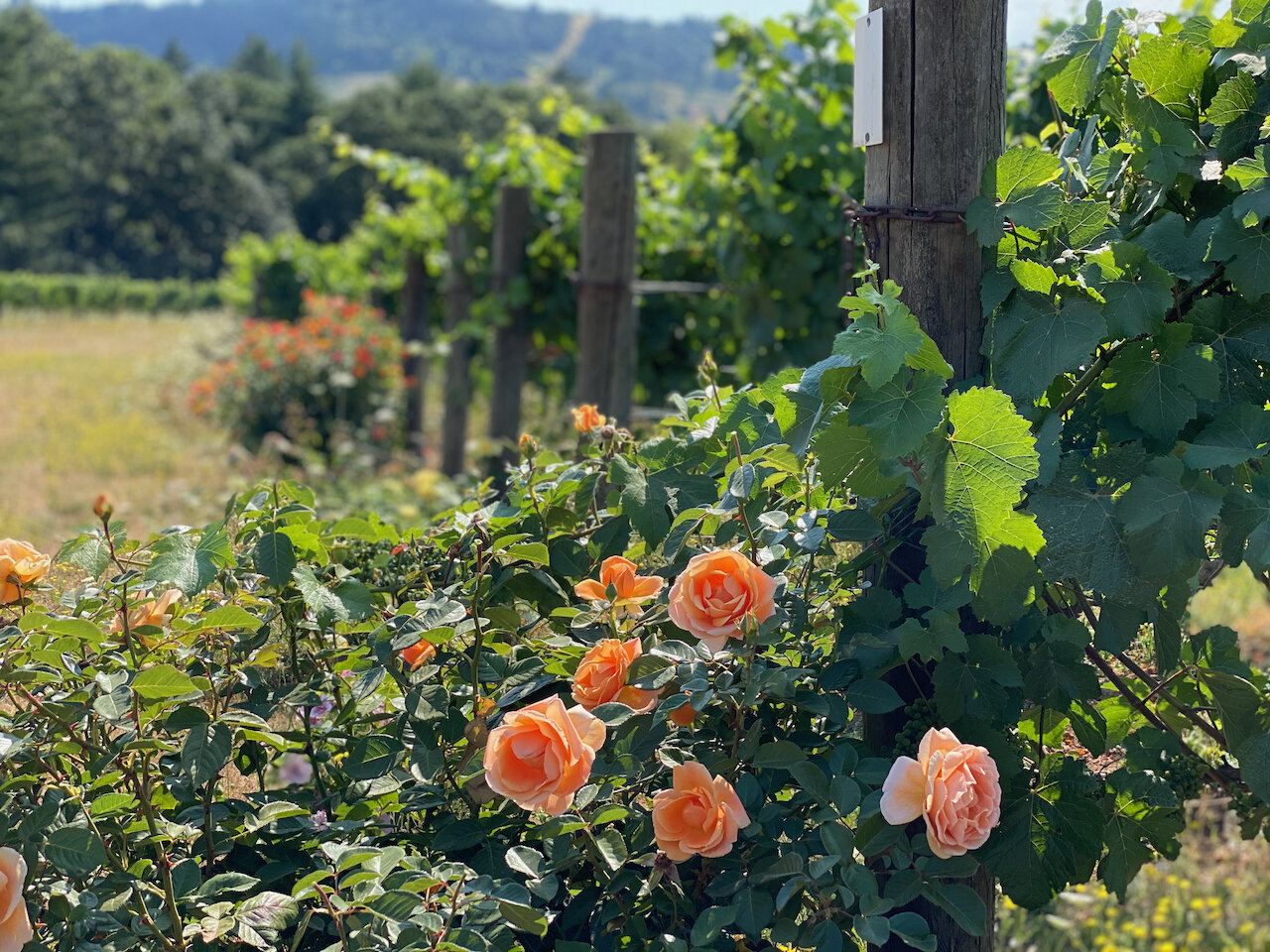
CARTER VINEYARD
Eola-Amity Hills AVA, first planted 1983
This historical vineyard is owned by Ken and Karen Wright of Ken Wright Cellars and lovingly farmed by Seth Miller. Carter is in located in the southwest end of the Eola-Amity Hills A.V.A., and my block is franc de pied Wädensvil vines planted back in 1983. Starting in 2021, I will also be working with a section of Pommard vines planted in the same year. The soil is volcanic (mostly Nekia-like Jory but with a thinner topsoil) and the elevation is about 325 feet, and the exposure is south-facing.
Originally, this vineyard was owned by Jack and Kathleen Carter starting in 1974. It had been an old cherry orchard that was only 4 acres producing by the time they arrived, and the rest was a field. They began planting Wädensvil and Pommard in 1983 (the blocks I produce my wine from). It’s organically farmed, and the level of natural harmony here is high: there has been a focused, long-term effort to restore the habitat for the rare Fender’s blue butterfly. It is truly beautiful country, and these old vines have incredible character and noblesse. Each vintage that I can make wines from here is a gift.


DURANT VINEYARD
Dundee Hills AVA, first planted 1973
The beautiful and historic Durant Vineyard was planted in 1973 by the Durant family, who continue to both live there and farm there. They are wonderful people, and it’s a dream come true to make wine from their vineyard. Durant Vineyard is on the southern slopes of the classic Dundee Hills neighboring Domaine Drouhin. The Dundee Hills for a very long time has been referred to as the “heart of the wine country”. Though the soil there is volcanic with silt, clay, and loam (“Jory”), the Lark Block, the source of my Durant Chardonnay, is from a block of vines planted on a small parcel of unusual ancient marine soil in 1991. Just across the gravel road from the Lark Block is their olive orchard, and if you haven’t tried Durant olive oil, I highly recommend it. I love that olive trees border this block within the vineyard, too. Some of you know how much I love working with flower essences and with vines bordering trees. The olive flower essence is cited to “bring peace, regeneration, and restored balance” to the weary and exhausted. (www.Bachflower.org).
The Lark Block is planted to Dijon 96, known in Burgundy for producing nervy, finely balanced, and elegant Chardonnay. There will be some additional Chardonnay (Dijon76) from the Raven Block starting in 2023, and the Durant Chardonnay going forward will be these two neighboring blocks combined. Since 2021, I’ve been producing Durant Pinot gris that goes into the Nerthus bottling. Beginning in 2022, a small production of classic Dundee Hills (Jory soil) Pinot noir from franc de pied vines planted in 1984 (the 2022 has 1974, too) will be available.




DUX VINEYARD
Dundee Hills AVA, first planted 2011
I’m super excited to work with a small block of Chardonnay from Mark and Lorie Stevens’ Dux Vineyard high in the Dundee Hills. I’ve been told that these vines were planted from cuttings of Draper Heritage Selection Chardonnay from Abbey Ridge. This lovely Dundee vineyard, first planted in 2011 and farmed by my dear friend and cosmic steward, Andy Humphrey, is situated at about 450 feet in elevation with a gentle southern exposure. The soil is classic red Jory. My first production of the Dux Vineyard Chardonnay was 2021. I love the old cherry trees that border my block and the beautiful energy that is there.
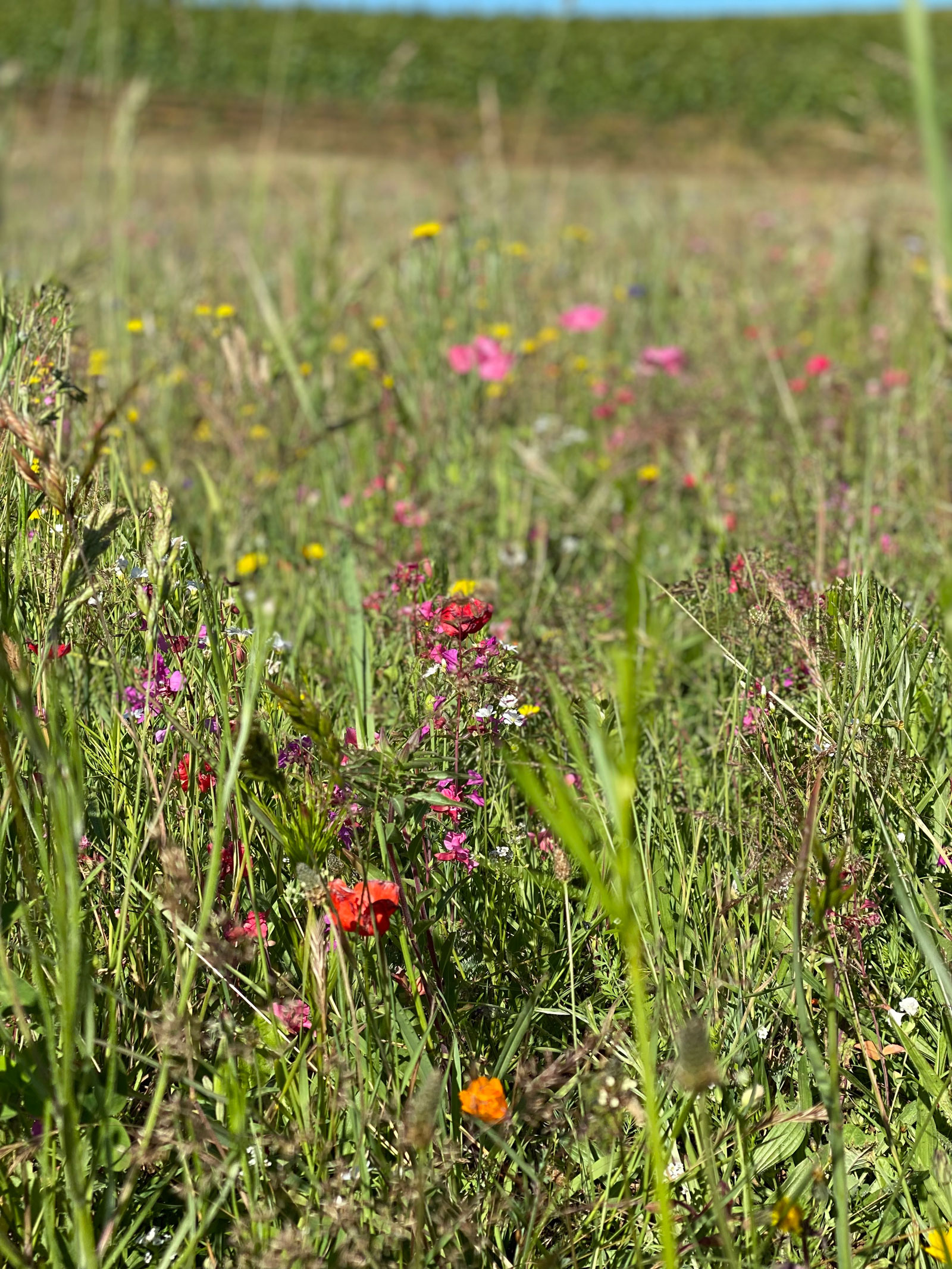

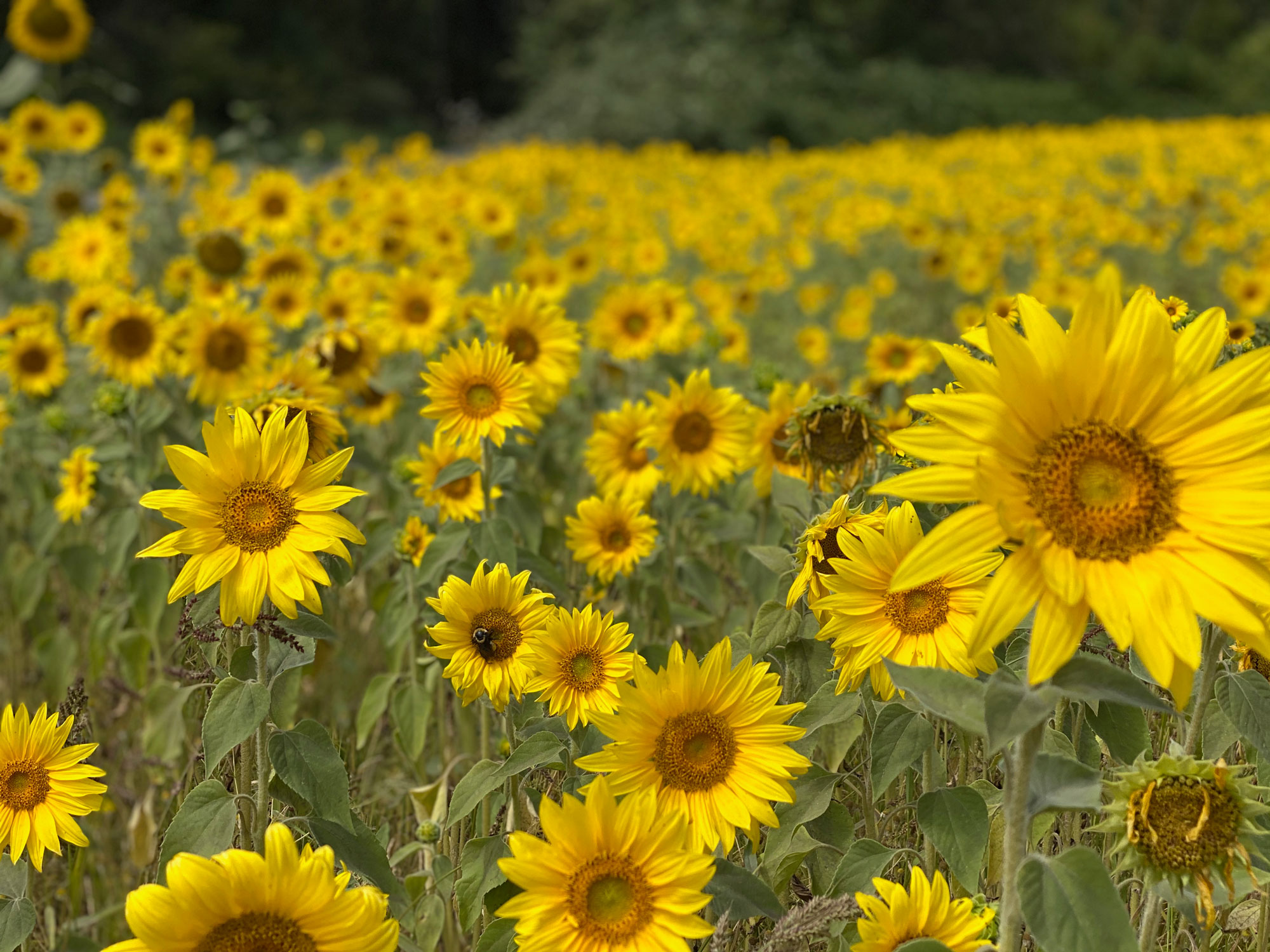
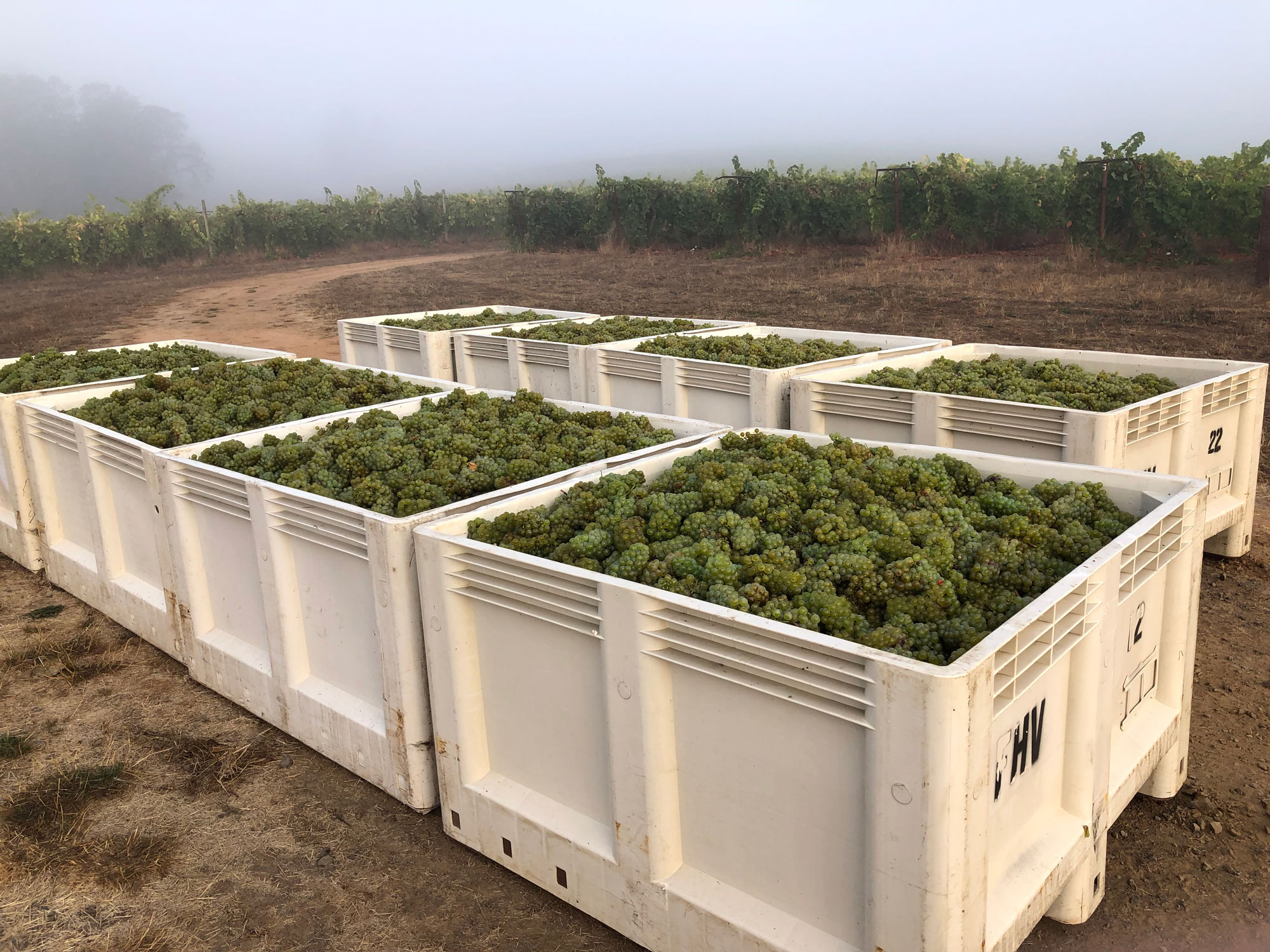

FREEDOM HILL VINEYARD
Eola-Amity Hills AVA, first planted 1982
The storied, family-owned and farmed Freedom Hill Vineyard was first planted in 1982 by Dan and Helen Dusshee. Their son, Dustin, is doing the farming, and the family has lived there all of these years. Situated in the foothills of the Oregon Coast range near Dallas, this vineyard is in the Mt. Pisgah-Polk County AVA, just outside the lines drawn for the Eola Hills AVA. The top producers of Oregon Pinot noir have been making wines of excellence-consistently- from Freedom Hill for decades. Some of my favourite Pinot noirs recently are from Freedom Hill.
This is the first marine sedimentary soil (Bellpine) vineyard I have worked with in my own winery, and I think this soil type is wonderful for my Pinot blanc. The source is an ancient seabed. The elevation ranges between 350 and 600 feet, and the exposition is southeast.
I was lucky enough in 2017 to start working with a 1.75 acre block of their Pinot blanc, and I fell in love with it on sight. I now have two bottlings starting in 2017 from here: the Barbie Pinot Blanc, fermented in an Acacia puncheon, and the neutral Burgundy barrel-fermented Freedom Hill Pinot Blanc. Starting in 2021, I’ve been thrilled to also work with a 3-acre block of young vine Chardonnay and an acre of Pinot noir. I love the beautiful wildflower field they support in the vineyard between the blocks.
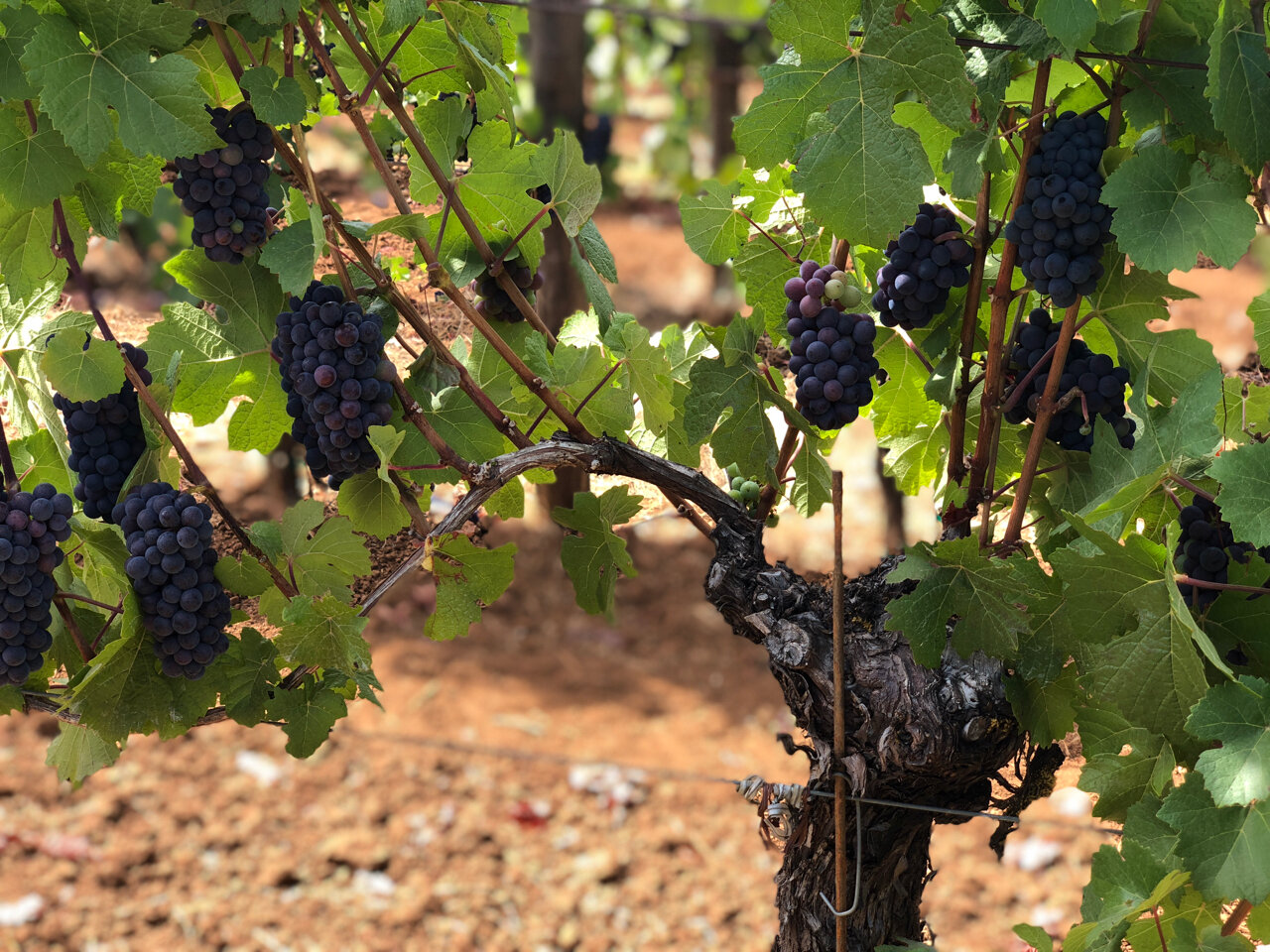

HYLAND VINEYARD
McMinnville AVA, first planted 1971
My first introduction to Hyland Vineyard was with the late Jimi Brooks in 2001. He had recently become the winemaker at Maysara Winery while also continuing his own winery, Brooks Wines. I was the winemaker at Torii Mor after the late Patty Green and Jim Anderson (Patricia Green Cellars) left, and being friends with Jimi, I drove to Maysara to taste through his wines. Now, back in those times, quite a few wineries (with some notable exceptions, including Eyrie and Evesham Wood) were purposefully making highly extracted, lush, and big Pinot noirs because of the zeitgeist. Without going into that topic, I’ll say that I still remember the moment I tasted his Hyland Vineyard Pinot noir from barrel. It was so cooling and fresh. It was noble and wild, with great energy. It was all about the vineyard.
So when the chance arose many years later for me to make Pinot from Hyland, I jumped on it.
As I wrote on the back label, Hyland is close to the Coast Range that separates the Willamette Valley from the Pacific Ocean. Originally planted in 1971, it’s one of Oregon’s oldest vineyards. My block is franc de pied (self-rooted) vines planted in 1988, and the soil is red Jory (volcanic with some silt, clay, and loam). The slope of this block is partly north-facing and partly west-facing, but a beautiful forest borders the block along the west-facing slope, providing some shading during the long summer afternoons. The legendary Charles Coury introduced this mysterious clone (we call it the “Coury clone”) of Pinot noir into Oregon when our industry was starting, and wine from these vines has a fine red character that is, in a subtle way, inimitable.
Hyland has been exquisitely managed by Bruno Corneaux, and this block has been farmed not only organically but biodynamically (both uncertified).
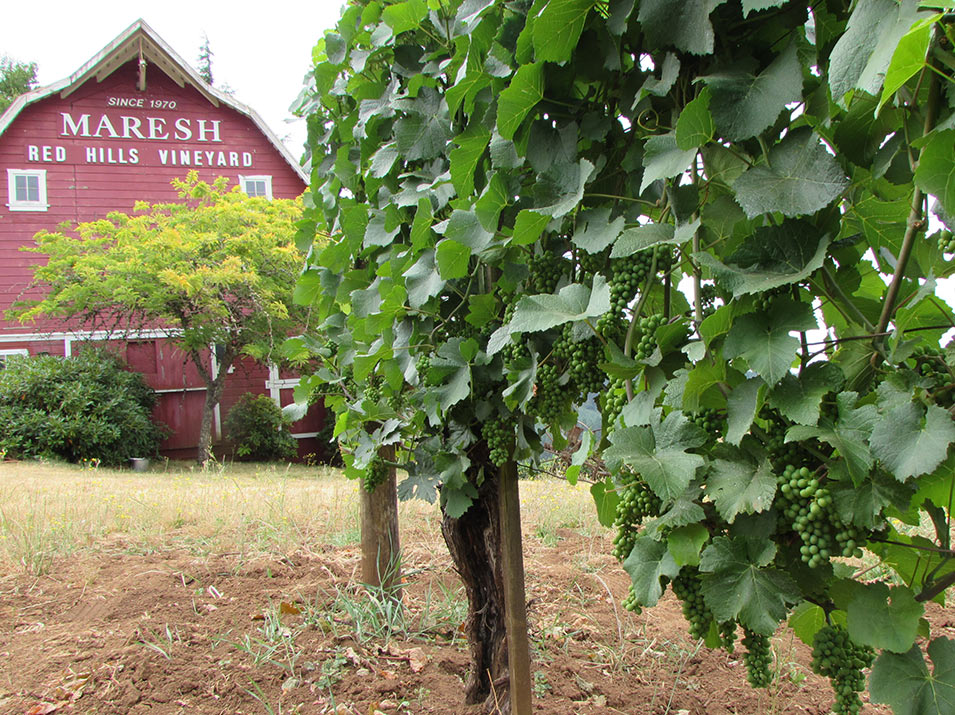
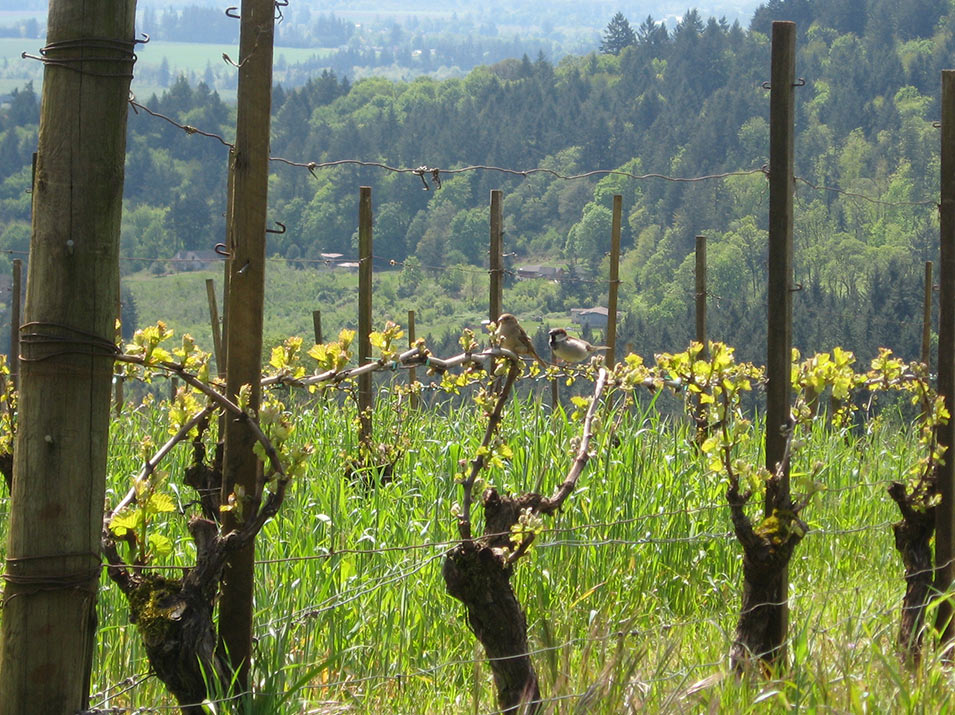
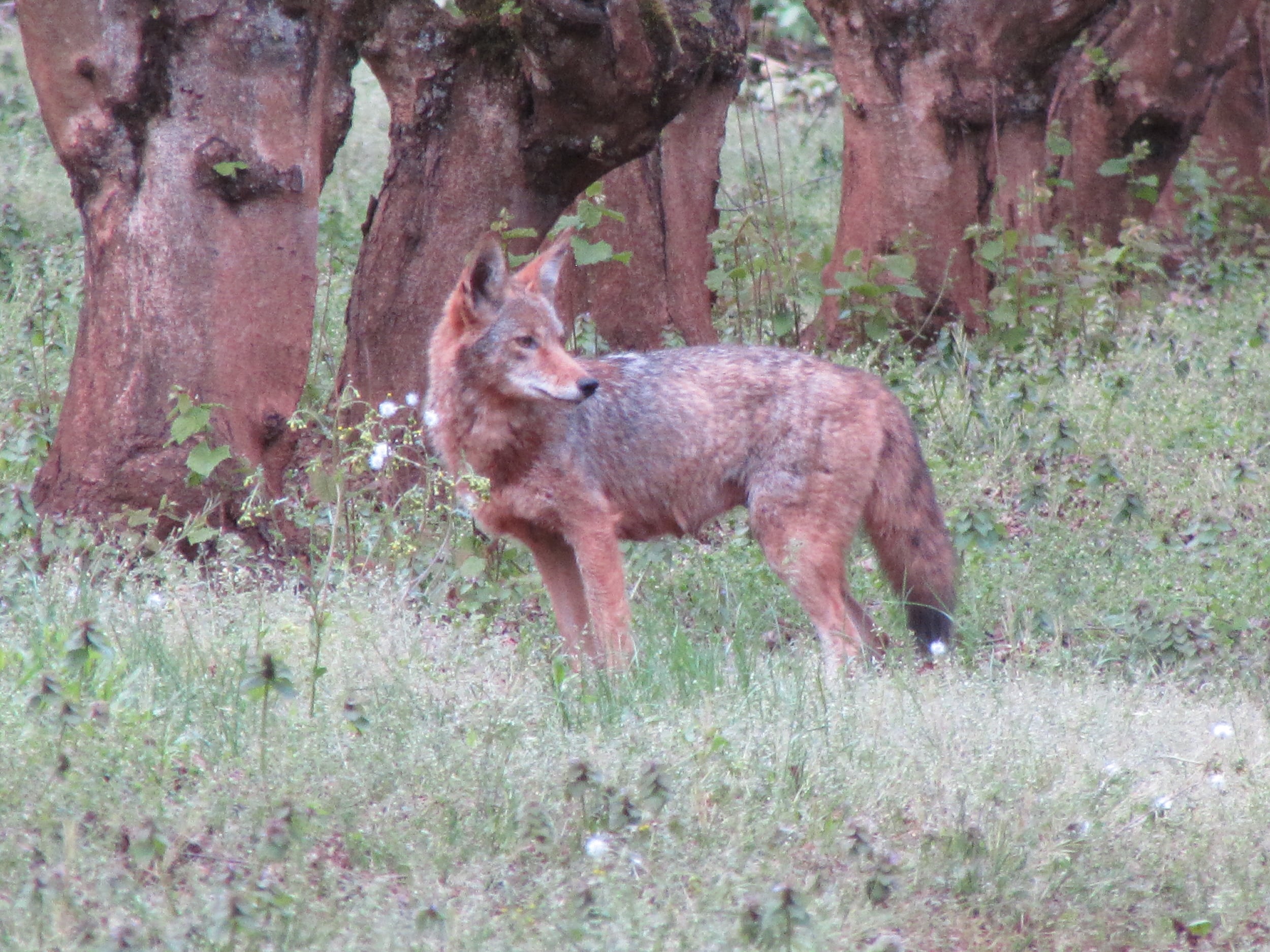
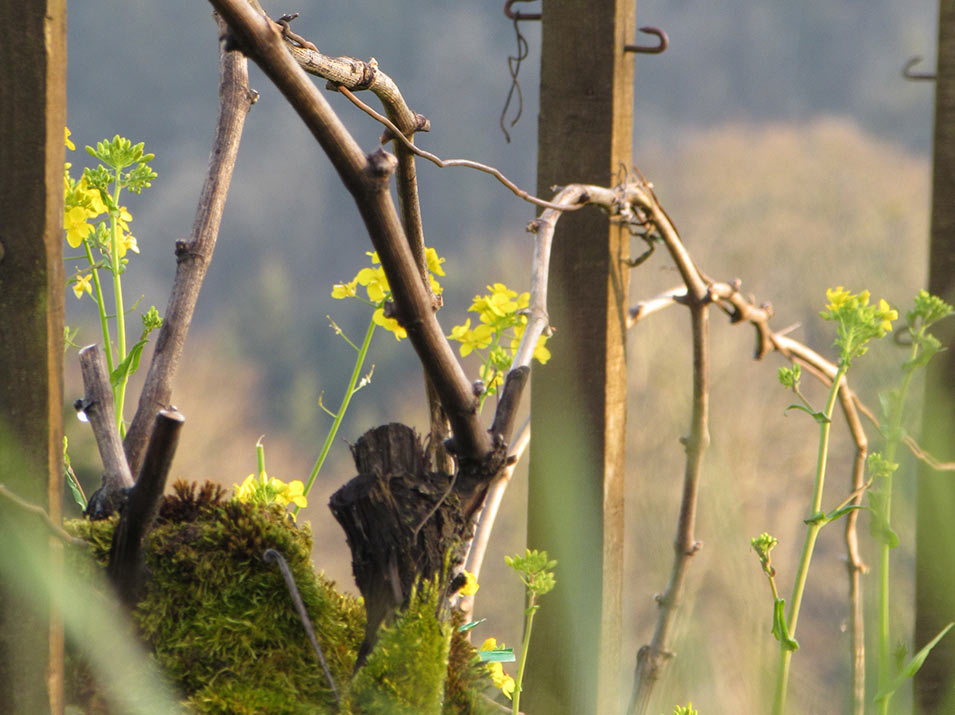
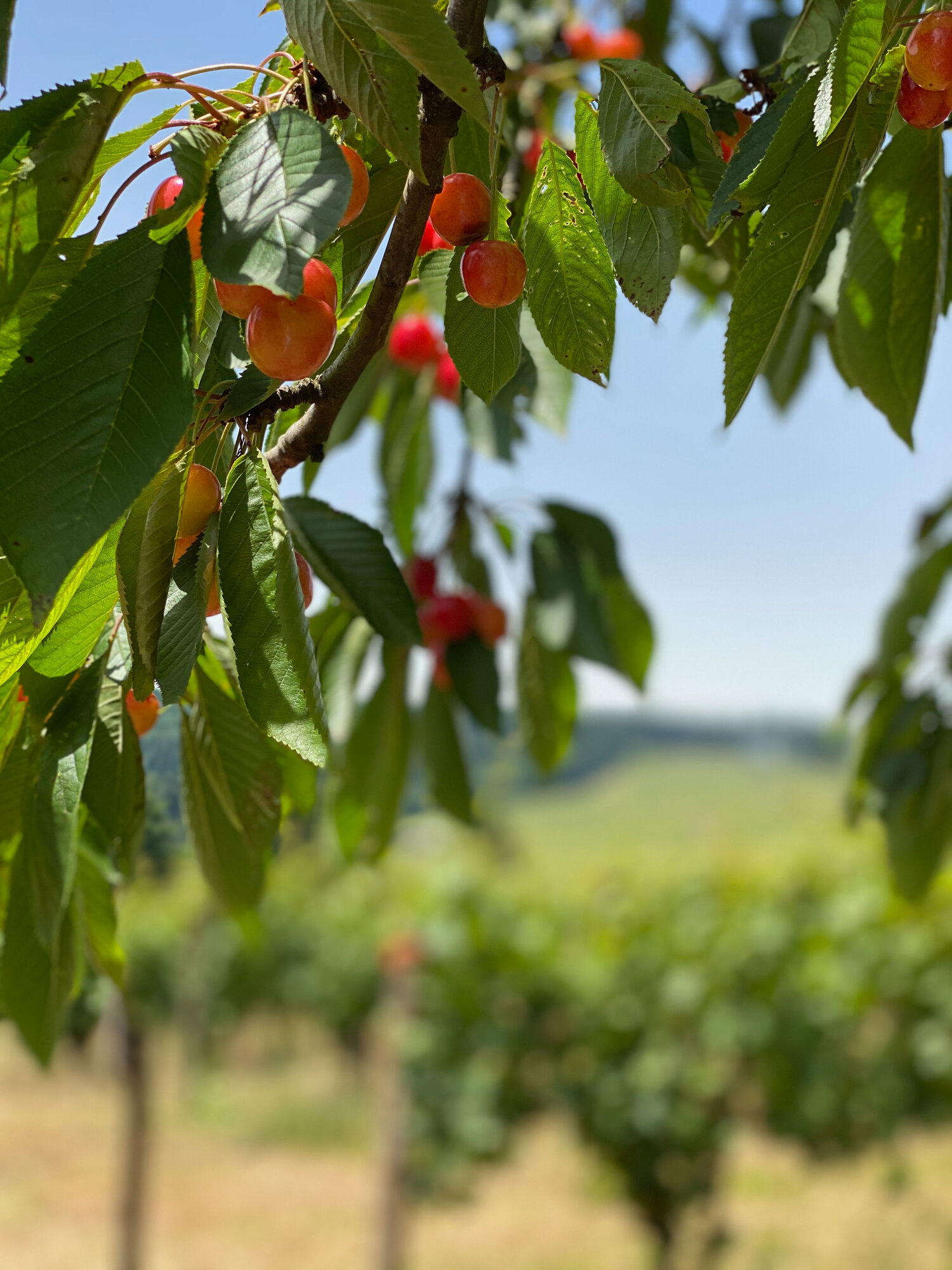
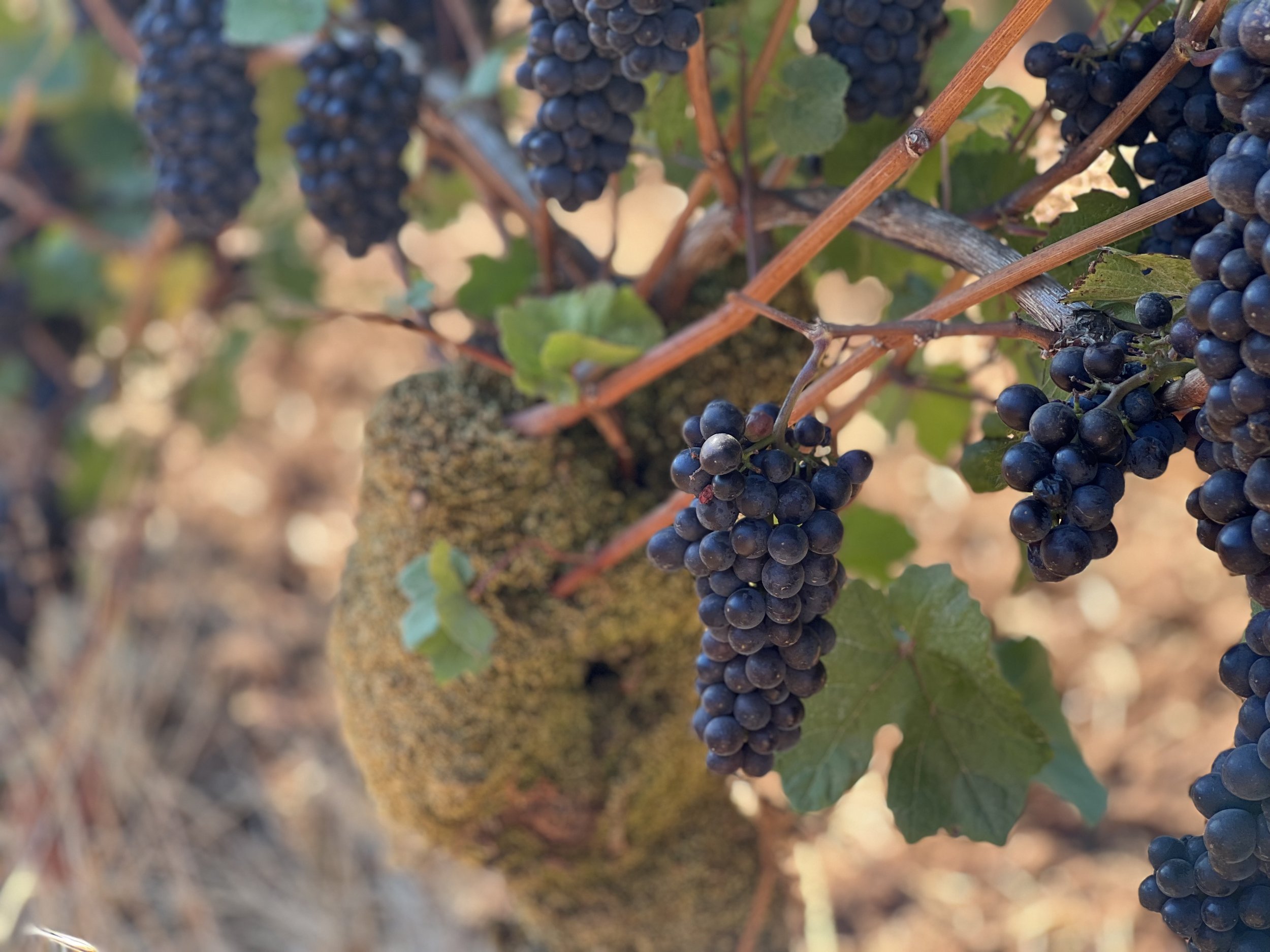
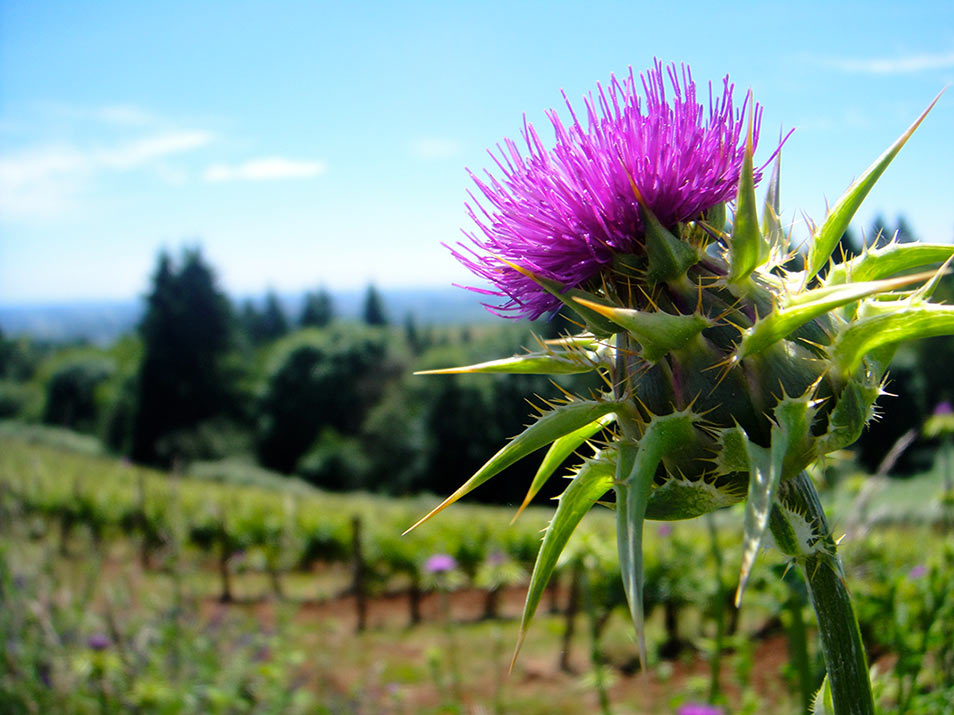
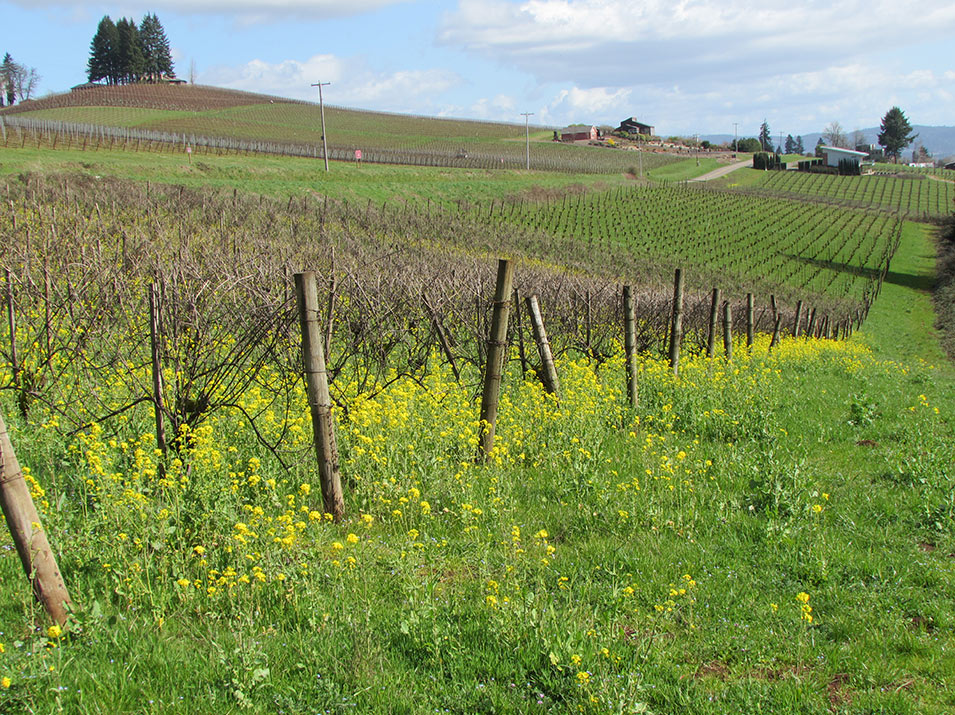
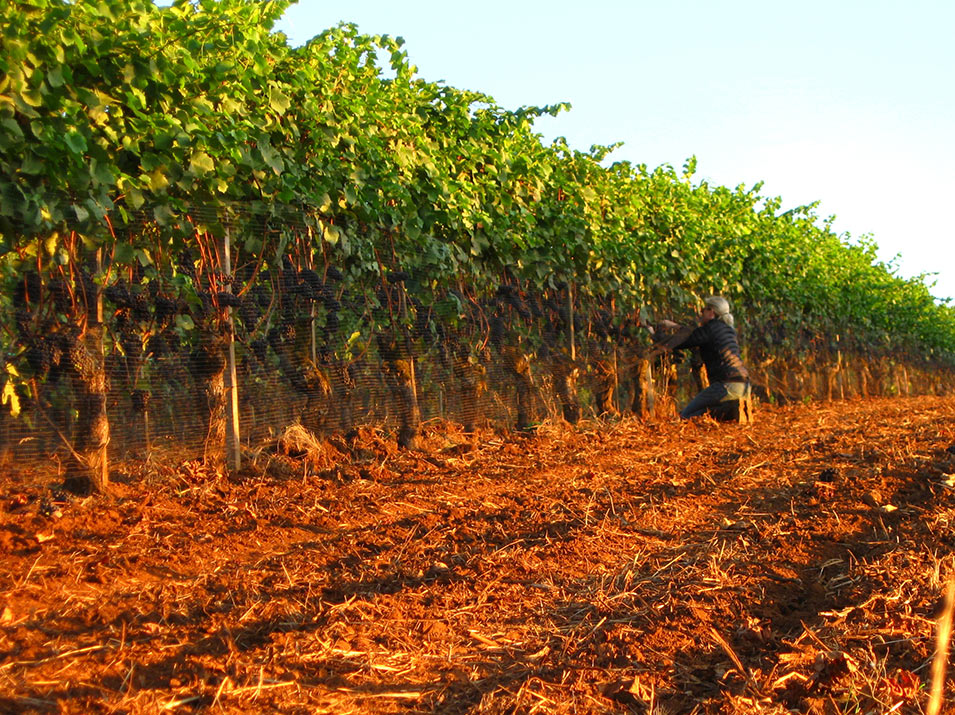
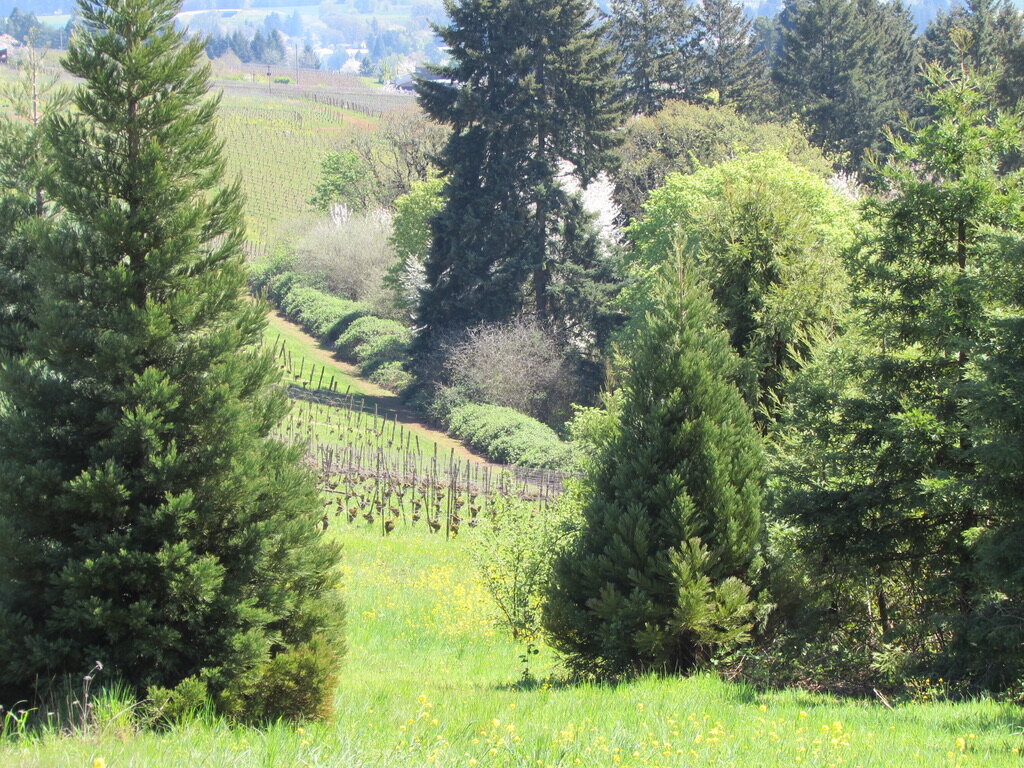
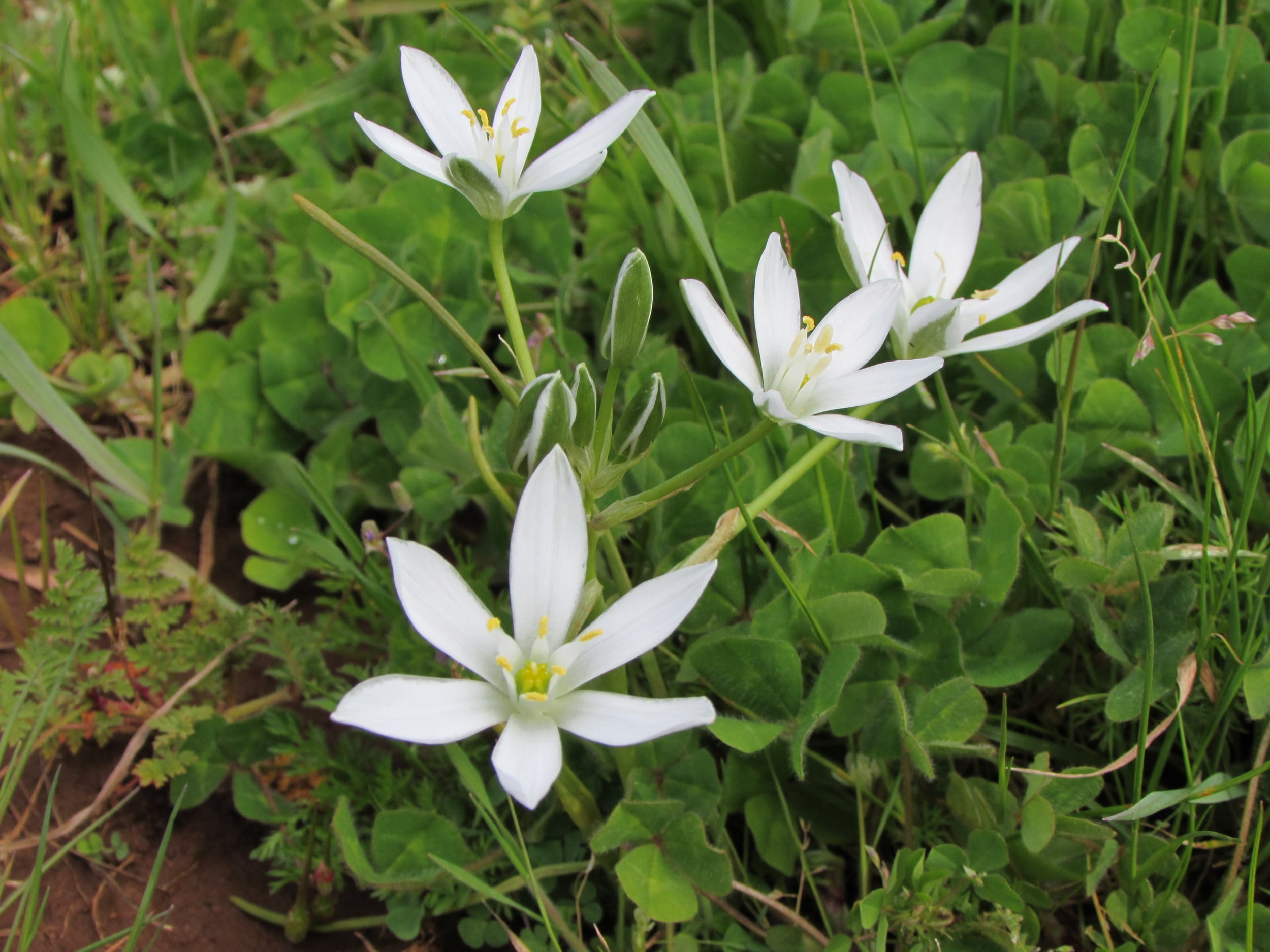

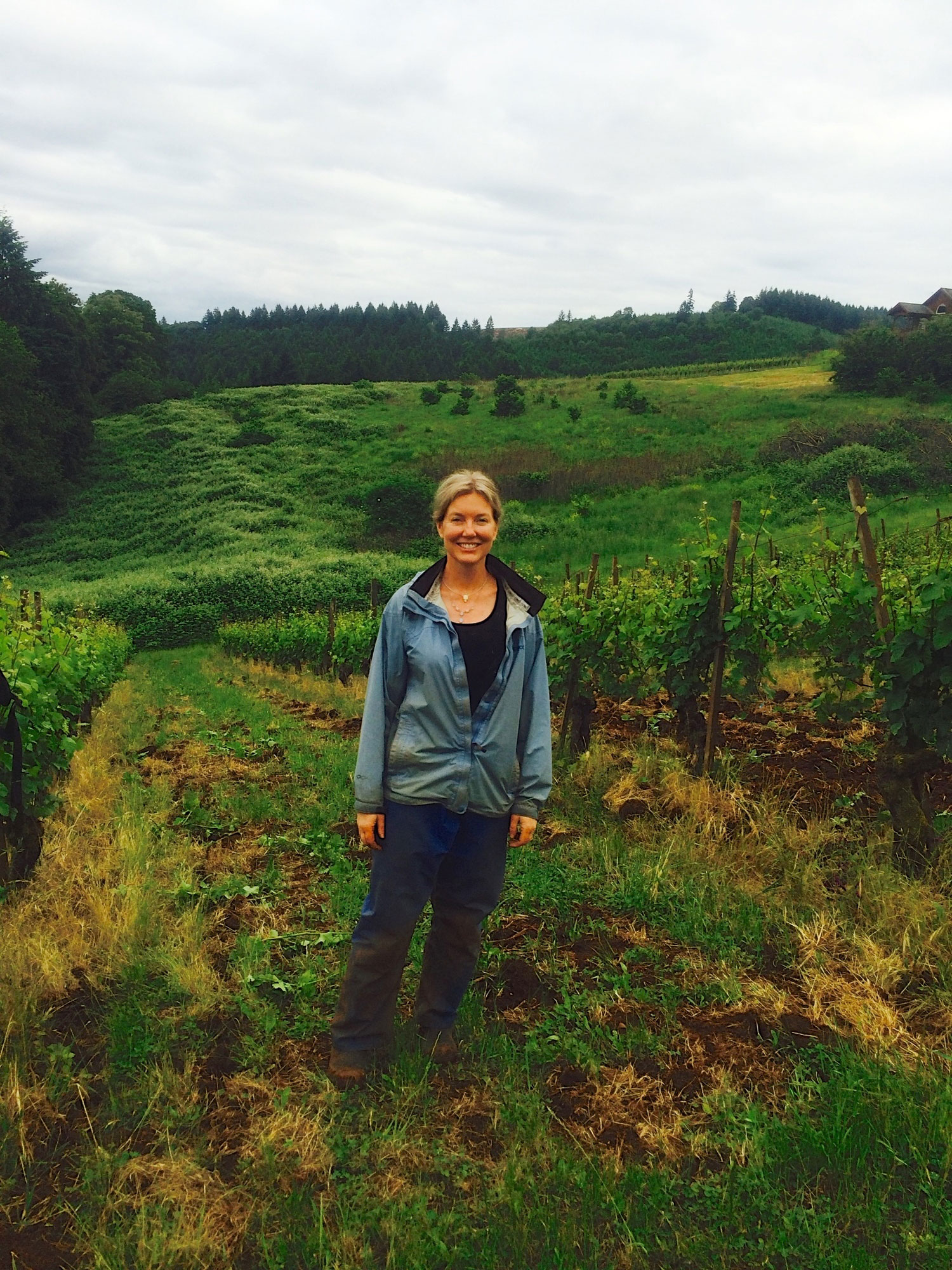
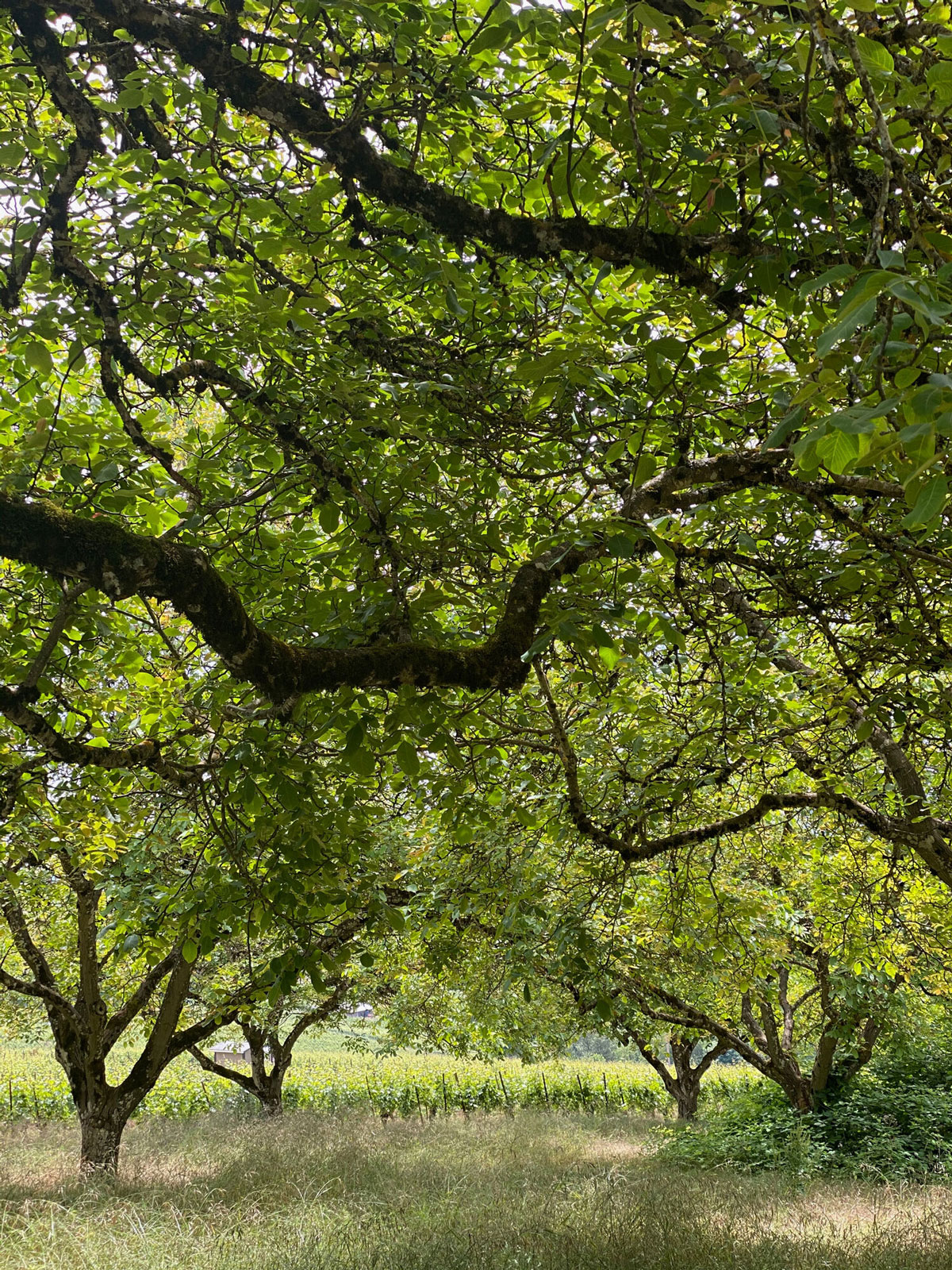
MARESH VINEYARD
Dundee Hills AVA, first planted 1970
This stunningly beautiful vineyard in the Dundee Hills A.V.A. (American Viticultural Appellation) was first planted in 1970 by Jim and Loie Maresh on Worden Hill Road above Dundee. Situated on a mostly south-facing slope between 500 and 700 feet above sea level, these old vines planted in Jory soil produce Pinot noir with the most seductive texture. Stirling Fox has been intuitively and expertly farming my blocks there from the beginning of my winery, and he is how I had the life-changing introduction to the Maresh family back in 2000. Some pruning and a lot of canopy work over the years along with other regular work on my part is only a tiny contribution to the farming of these treasured blocks.
The Maresh family has been living on the farm since 1959. There is tremendous biodiversity and balance here, because from the beginning, Jim and his late wife, Loie, had the foresight and common sense to avoid vineyard monoculture. There are hazelnuts, hundred-year-old walnuts, hundred-year-old Royal Anne cherry trees, other fruit trees and plenty of acreage of wild areas throughout the farm. Their daughter Martha, who keeps houses for violet-green swallows and bluebirds on the trellis posts, and they are flying all over the place in the spring and summer. She lovingly refers to this land that she manages and protects as “the farm” and so do I. It is not just a vineyard at all.
Maresh Vineyard is certainly one of the most sought-after fruit sources in the Willamette Valley, and it has consistently produced wines of clear transmission of site for decades.
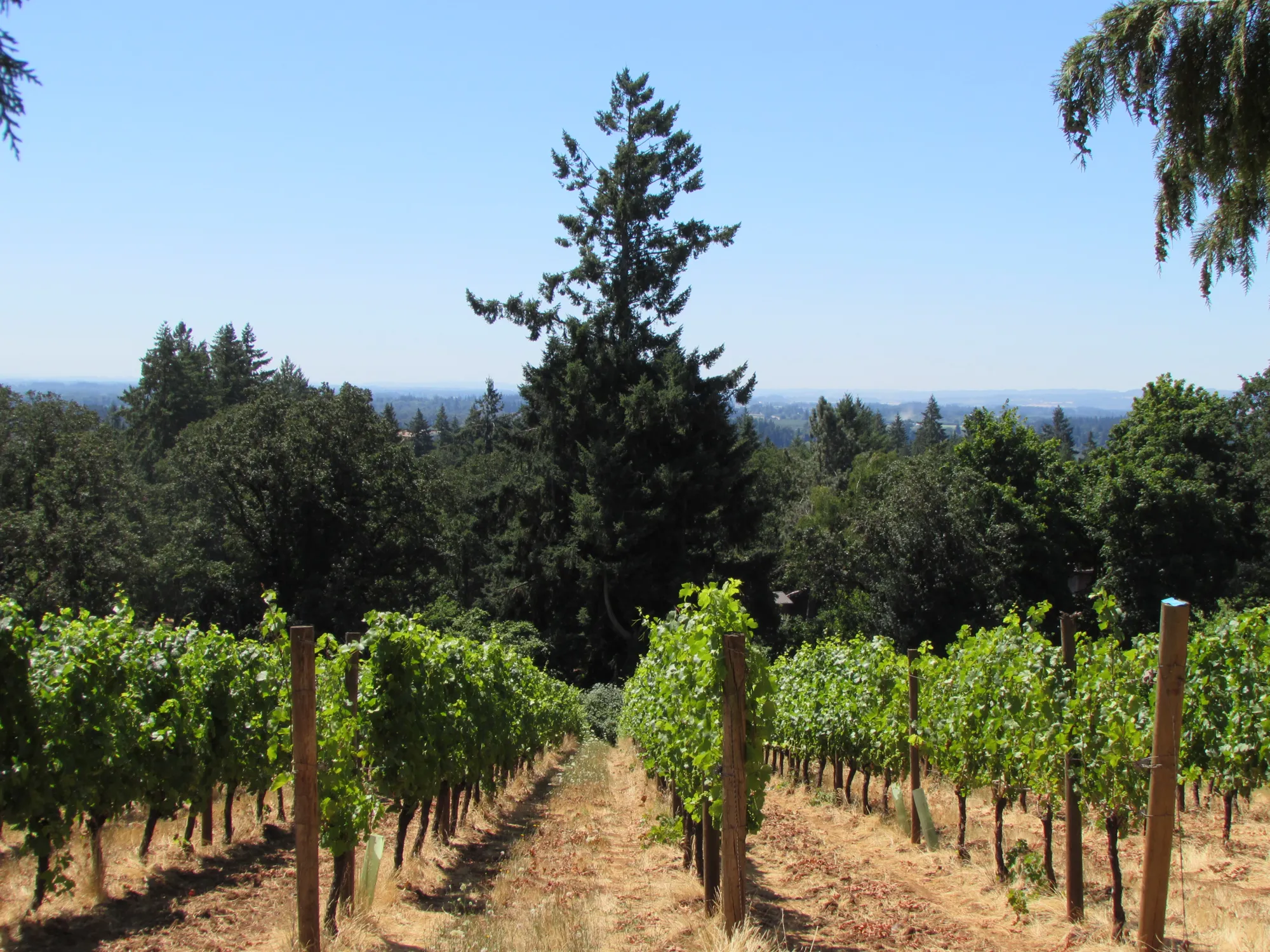
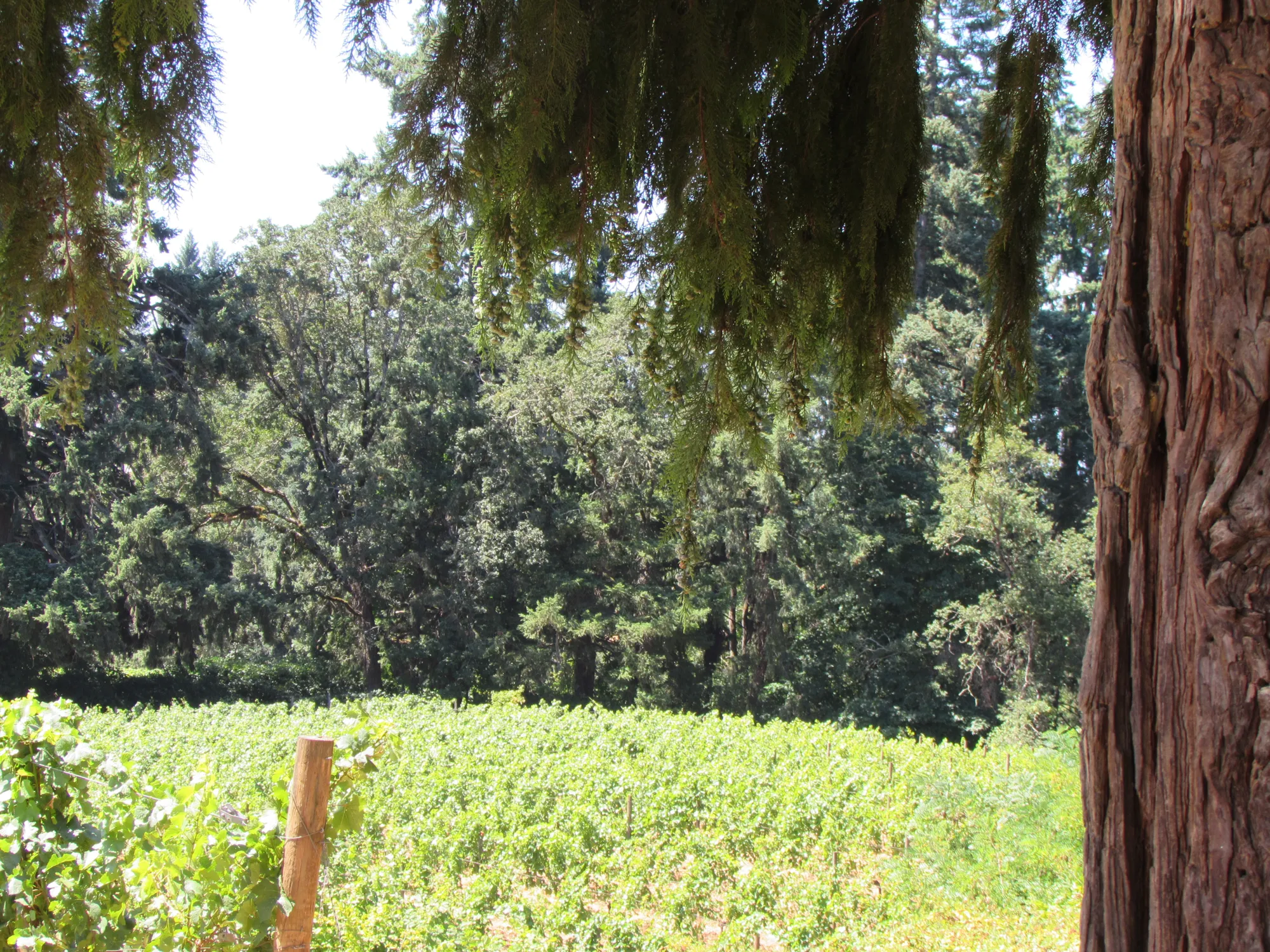
STATER VINEYARD
Dundee Hills AVA, first planted 1988
Starting in 2023, I began leasing Stater Vineyard and have been responsible for farming, continuing my long working relationship with Stirling Wine Grapes, who always farmed my leased blocks at Maresh Vineyard since 2008 and before that for Scott Paul Wines and Rex Hill when Paul Hart was owner. I was beyond excited to have the opportunity to produce wine from this special part of the Dundee Hills for several reasons. The first reason is Sylvia Stater, wife of the late Wayne Stater, who founded this vineyard and where he and Sylvia moved to in 1988. For Wayne, moving here was a loving return to his Oregonian roots. His grandfather is buried just down the road. This place carried deep meaning to him and through him, to Sylvia. She is wonderful.
The second reason is that it shares borders with The Eyrie Vineyards estate vineyard on one side and Durant South Bishop Block on the other side. Talk about hallowed ground and ties to my past (Eyrie)! You may recognize the wise and majestic Douglas fir which is depicted on the Eyrie wine labels in the photo above.
The third reason is that the energy there is magical. Red-tailed hawks soar above this 4.73-acre vineyard enclosed within a grove of towering cedars, firs, and other mixed trees. About 4.2 acres are Pinot noir vines (planted in 1990 and a few years past) and there’s about a half-acre of Pinot blanc. The vine spacing is 7ft. x 4 ft., the elevation is about 400ft., and the slope is gently facing south-southeast. And of course, the soil is red Jory (volcanic with silt-clay-loam). I look forward to the years in relationship with these vines.
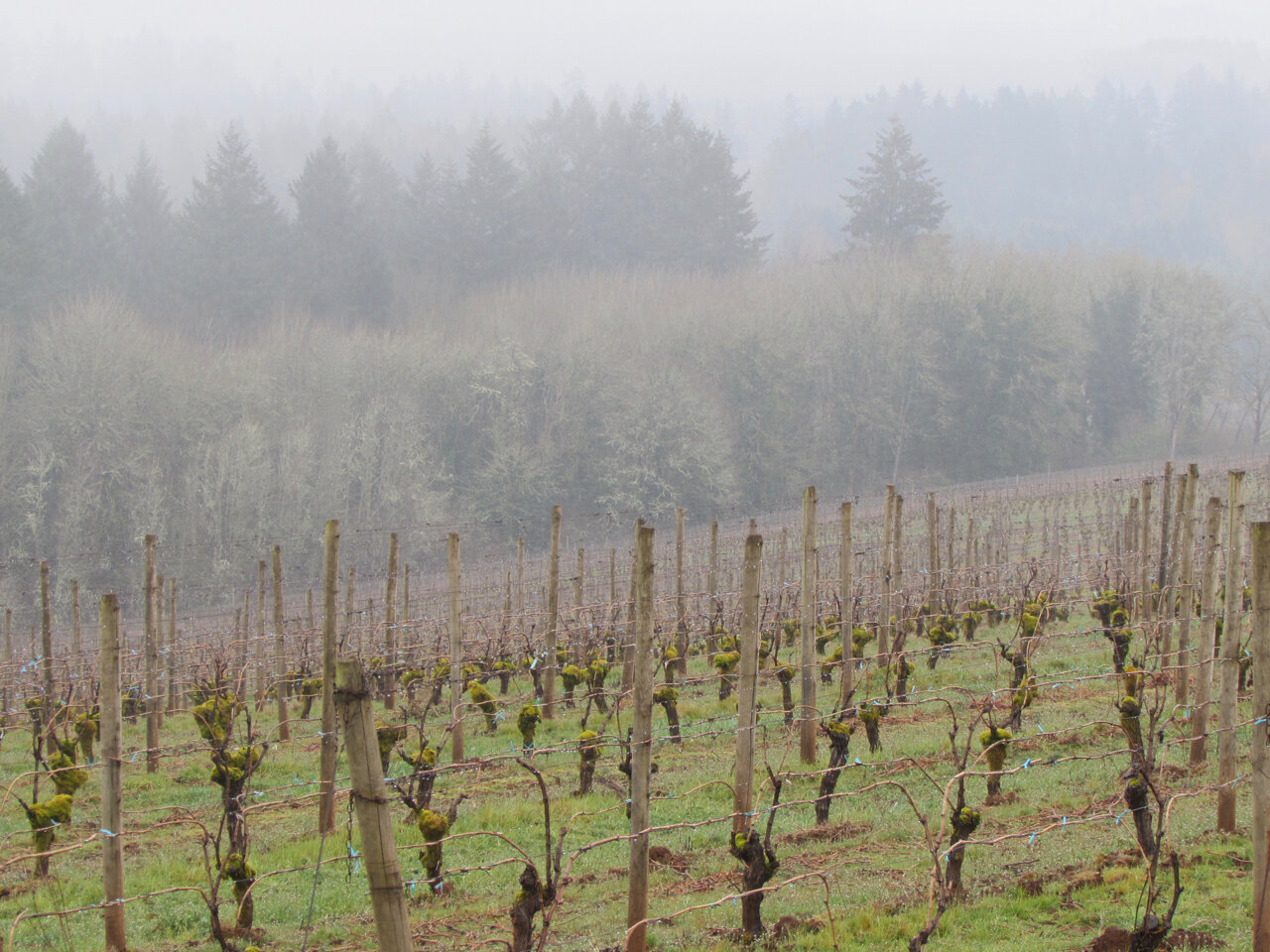

WEBER VINEYARD
Dundee Hills AVA, first planted 1978
The lovely Weber Vineyard, home to Western bluebirds and one of the older vineyards in the Dundee Hills, was first planted by the Weber family in 1978 on an unusual geological formation from land they purchased from their neighbors and friends, the Maresh family. Vivian Weber told me one of the stories of how it all began as we drank hot tea on her front porch (the view and the birdsong and the overall energy felt and looked like some other time in a paradise on this early summer morning). The short of it is that once her late husband, Art Weber, knew he wanted to plant a vineyard, he began searching for David Lett (The Eyrie Vineyards). This was in 1972. Art ended up asking someone at the local hardware store where he could find Mr. Lett, but the man refused to tell him where he lived. Knowing David as I did, this is no surprise! So, Art and Vivian went driving up Worden Hill Road, and up the hill they saw a handwritten sign advertising land for sale. I believe it was about 21 acres. They were sure this must be David Lett, and they pulled over. As it turned out, Jim Maresh Sr. happened to be out and about on his and Loie’s farm (Maresh Vineyard), and that is how the Webers purchased their vineyard land from the Maresh family and how they became friends. I met Art and Vivian long ago at the Maresh Red Barn when they had get-togethers with friends and neighbors on the hill. In 1976 the Webers bought an additional, adjoining 65 acres from their neighbor, Nita Moyer.
When the opportunity to make wine from this gorgeous Dundee Hills vineyard, came up, there was no hesitation. I had loved it from afar for many years.
For the Pinot, there are two blocks with which I work. By far the largest parcel is 1983 franc de pied Pommard vines in the southeast corner of the vineyard. The vines are bordered on the east by forest filled with birdsong and on the south by a line of huge and magnificent Oregon oak trees and Bigleaf maples. I also take an acre of 1987 franc de pied Pommard in the northeast corner. This, too, is bordered by the same forest on the east and a huge patch of wild blackberries on the north. I make Pinot gris from a block between the two Pinot blocks I take, and that has been going into the Nerthus bottling. The soil is the classic, red Jory (volcanic with silt, clay, and loam). Andy Humphrey has managed this vineyard as a dear friend to the Webers for a long time, and everything about this vineyard has good energy.
